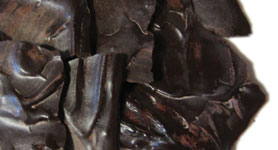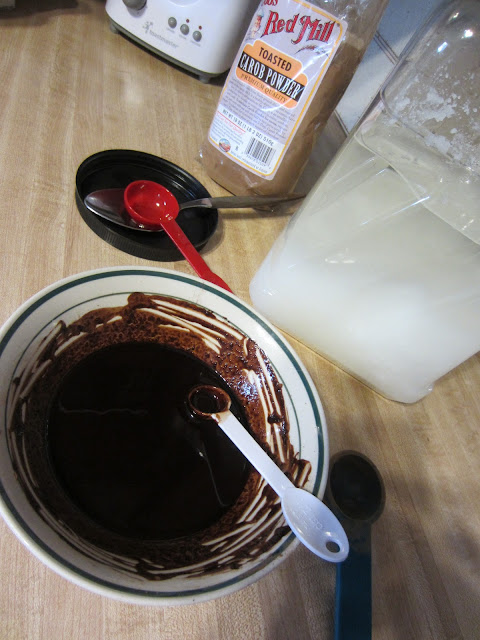Photo Credit; Alistair Williamson
When I first started out on this healthy eating journey, one of the things that was recommended to me was to eat locally and in season. The way to do that was supposedly to look up what foods are in season where you live, and go find them. Sounds logical, right?
I soon found that was a lot harder to do than it sounded. On most websites that claimed to tell you what was in season and what wasn't, I soon found that despite the fact that the state I live in has an economy largely based on agriculture, many sites told me that there was nothing being grown for months out of the year here! Even the best one I have found told me earlier this year that there was nothing available but lettuce, snap peas and strawberries, when even my local chain store was carrying locally grown asparagus. In fact, other than a few lucky finds like the asparagus, even if you are buying foods that are in season, you are very likely not buying locally at all, even if your part of the world is capable of producing it.
So what are we supposed to do for the months in the year when next to nothing is listed? Are we stuck relying on large chain stores to provide us with imported mono-cultured crops? What about growing our own food? While this would not be a bad idea, many of us simply do not have the resources available to do that in any significant quantities, especially not in the middle of winter.
Enter the actually local farmer. The farmer who is often too small to have their crop bought by chain stores even locally due to the fluctuation in crop type, size, shape and quantity. Too small to afford an organic certification even if their practices are 100% organic. (Post on this coming soon!) But this natural variation is exactly what we are after! Unfortunately for us, they are also too small to advertise in any significant way. So how do we find them?
Photo Credit; Terence O'Brien
We go to our local farmer's market! Yet even these can be an elusive beast.
These sites do a pretty good job of listing many farmer's markets;
But they are often outdated or incomplete, as they rely on people to update them personally. Even if you find your town's market listed the hours are often vague, missing or flat out wrong. There is typically no coordinator, no phone number to call, no one to ask for directions. Maybe you drive up to where it is supposed to be and either find it practically empty or missing entirely. And what are you supposed to do for the months in the year when it just isn't there?
For me, the experience of trying to find the farmer's market was a great lesson in what community actually looks like. These things thrive on things like trust and word of mouth, and you typically have to delve into that in order to find them. Start by talking to people - ask your friends, your family, your neighbors, the clerk at the grocery store. Do they go to the farmer's market? Do they know where it is? Do they know someone who does? Where is it? When is it? How do you find out more? I was personally surprised when these questions were answered by my mother in law. I thought she would be the last person to know about it since she lives in a neighboring town, refuses to eat healthily even as a Type 2 diabetic and thinks organic food is cost prohibitive, but she is a school teacher, and as such is very up to date on what is happening in her community.
It turns out, as the towns around here are quite small and close together, our "local" farmer's market is actually hosted in her town. Sure, our town has one or two stands on a Saturday, but I don't want to live on zucchini, summer squash and pickles, especially not for the entire summer! Thankfully, the farmer's market where everyone shows up on a Saturday is full of delicious varieties of fresh fruit and vegetables, even pastured chickens and eggs! It is a great opportunity to see what our area is capable of producing, to invest financially in the community here, but also to invest in it socially. We have the chance to talk to the people producing the food, to ask them where their farms actually are, to find out if and when they do come to the farmer's market in our town during the week, and to see if we could come out to the farm and buy from them directly. We can share gardening tips for the exact climate that we live in, commiserate on the effect the weather that week is having on our crops or livestock, and just generally get to know each other. This is a big part of our plan for food security. (More on that soon.)
This all sounded very daunting to me to start with, but I encourage you to get out there and give it a go. We are raised in a very strange society that doesn't talk to our neighbors, and I think that is an important skill that needs to be regained. Sure, it will probably feel awkward at first, it did to me, but it is a skill and you will get better at it and very quickly start enjoying yourself.
If you do ask around and no one in your circle knows about any farmer's market, or can only give you very vague ideas about it, try looking in your local newspaper, yellow pages, or even your local TV station. Right around the time of year that they start up (usually late spring, but it will depend on your area) there is usually a little push to get some advertising out there, but as I said before they typically don't have the resources to do anything big, so they tend to target the people who are already looking - keep your eyes and ears peeled!
Last but definitely not least, it is worth going straight to the source - search for the actual farms near you. (Try looking on localharvest.org and eatwild.com.) Call them up directly and asking if they go to a farmer's market, and if not, how you could go about buying from them.
How did you find your local farmer's market? Are you still looking? What did you find when you got there? Have any tips for getting the most out of the experience?
Stay tuned for Part 2, How to Eat Locally and in Season Through Winter.
This post was shared through Simple Lives Thursday.






























